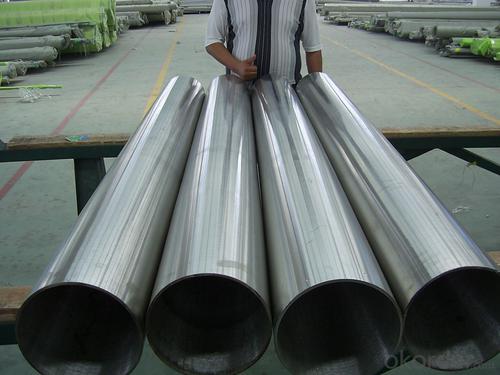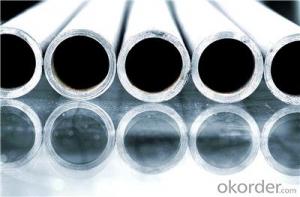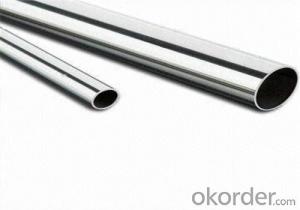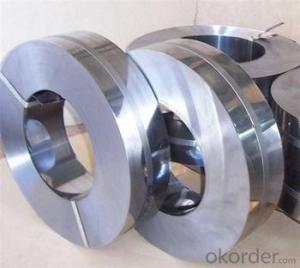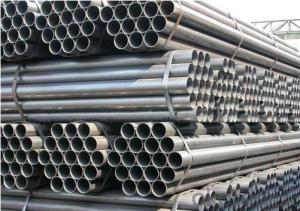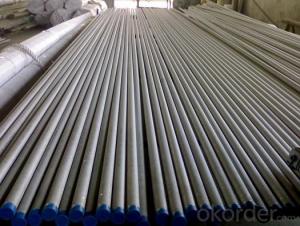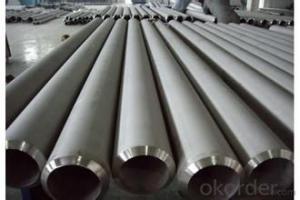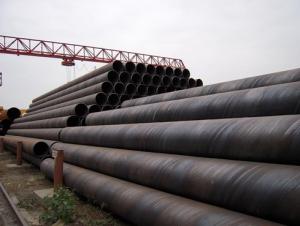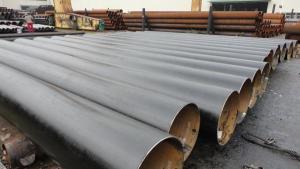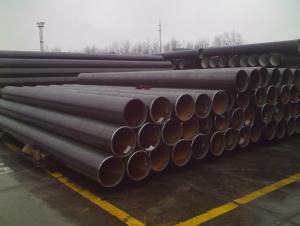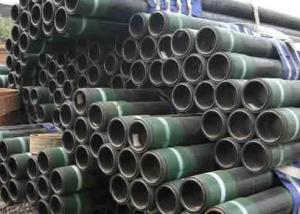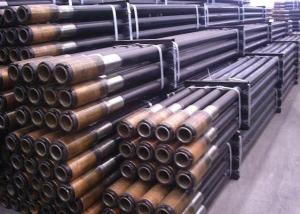TP347HStainless steel pipe
- Loading Port:
- China Main Port
- Payment Terms:
- TT OR LC
- Min Order Qty:
- -
- Supply Capability:
- -
OKorder Service Pledge
OKorder Financial Service
You Might Also Like
The TP347H stainless steel pipe is a kind of austenitic stainless acid resistant steel, with good resistance to intergranular corrosion resistance and good corrosion resistance, mainly used in aerospace, petrochemical, food, paper and other industries.
TP347H stainless steel is austenitic stainless acid resistant steel, are widely used in aerospace, petrochemical, food, paper and other industries, such as the exhaust duct and branch of aero engine turbine compressor, heat pipes and parts of not more than 850 DEG C under the working conditions in a small load and temperature.
The characteristics of TP347H stainless steel pipe is corrosion, intergranular anti good in acid, alkali, salt solution, have good corrosion resistance.
The physical constants of TP347H stainless steel pipe:
Melting point: the temperature of 1398-1427 DEG C
Specific heat capacity: 500J (kg.K)
The elastic modulus at 20 DEG C: 196GPa, 200 DEG C to 400 DEG C for 186GPa, 177GPa, 500 degrees 167GPa, 600 DEG C for 167GPa
Specific resistance: 0.75nN.m
Chemical composition of TP347H stainless steel pipe:
C: = 0.10, Si: = 1 Mn: = 2 Cr:17.0-20.0 Ni:9.0-13.0 Nb:8 * C%-1.5 S: = 0.030 P: = 0.035
Mechanical properties of TP347H stainless steel pipe:
20 C: 559-637 235-274 53-61 63-69 20.6-27.4
500 C: 392-429 147-216 28-36 56-66 23.5-28.4
600 C: 363-382 137-186 28-34 54-65 24.5-30.4
650 C: 304-363 118-167 31-38 54-61 23.5-31.4
700 C: 245-304 31-42 44-60 24.5-29.4
Heat treatment of TP347H stainless steel pipe:
The temperature of 1000-1100 DEG C solid solution treatment, water cooling
Corrosion resistance of TP347H stainless steel pipe:
Uniform corrosion
Intergranular corrosion by sulfuric acid with copper sulphate and copper scrap method (T method), copper and sulfuric acid sulfuric acid method (L method) and 65%HNO3 method (X method) test
Antioxidation: at 750-800 DEG C in the air, the antioxidant properties of this steel has stable
- Q: What does "steel pipe SC" mean?
- DN100 and "SCH80" refer to the outer diameter and the wall thickness of the steel pipe;
- Q: How much is 4 inches steel tube MM?
- 1 inches =25.4 mm;4 inches =101.6 mm;The specification of steel pipe is usually nominal size;
- Q: Can steel pipes be coated for additional protection?
- Yes, steel pipes can be coated with various materials to provide additional protection against corrosion, abrasion, and other environmental factors. Coatings such as epoxy, polyethylene, and zinc can be applied to enhance the durability and lifespan of steel pipes, making them suitable for diverse applications in different industries.
- Q: What is the difference between hot-dip galvanizing and electroplating for steel pipes?
- Hot-dip galvanizing and electroplating are both methods used to protect steel pipes from corrosion, but they differ in the process and the properties of the resulting coating. Hot-dip galvanizing involves immersing the steel pipe in a bath of molten zinc, which forms a thick and durable coating that bonds metallurgically with the steel. This provides excellent corrosion resistance and protection even in harsh environments. On the other hand, electroplating involves the deposition of a thin layer of zinc onto the steel pipe using an electric current. While electroplating also offers corrosion protection, the coating is typically thinner and less durable than hot-dip galvanizing. Hot-dip galvanizing is typically preferred for steel pipes that require long-lasting protection, while electroplating may be suitable for applications where a thinner coating is sufficient.
- Q: Can steel pipes be used for drinking water supply?
- Yes, steel pipes can be used for drinking water supply. Steel pipes are commonly used in water distribution systems due to their strength, durability, and ability to withstand high pressures. However, it is important to note that the steel used in these pipes must be specifically designed and approved for potable water applications to ensure that it does not contaminate the water with any harmful substances. Additionally, proper maintenance and regular inspections are necessary to prevent the formation of rust or corrosion, which can affect the quality of the water.
- Q: What are the safety precautions for handling steel pipes?
- Some safety precautions for handling steel pipes include wearing appropriate personal protective equipment such as gloves, safety glasses, and steel-toed boots. It is also important to use proper lifting techniques to prevent strain or injury, as steel pipes can be heavy. Additionally, ensuring a clear and organized workspace, as well as securing the pipes properly during transportation, can help prevent accidents or damage.
- Q: Can steel pipes be used for conveying abrasive slurries?
- Yes, steel pipes can be used for conveying abrasive slurries. Steel pipes are known for their durability and strength, making them suitable for handling abrasive materials such as slurries. However, to ensure longevity and prevent excessive wear, it is important to select the appropriate grade of steel and consider factors such as pipe thickness, lining options, and flow velocity. Additionally, implementing proper maintenance and inspection procedures can help to detect and address any wear or corrosion that may occur over time.
- Q: What are the factors affecting the pressure rating of steel pipes?
- The factors affecting the pressure rating of steel pipes include the thickness and quality of the steel used, the diameter and length of the pipes, the temperature and fluid being transported, as well as the design and construction of the pipe system.
- Q: What are the different types of steel pipe coatings for corrosive environments?
- There are several types of steel pipe coatings specifically designed for corrosive environments. Some common options include fusion-bonded epoxy (FBE) coatings, liquid epoxy coatings, polyethylene (PE) coatings, and polyurethane (PU) coatings. These coatings provide a protective layer to prevent corrosion and extend the lifespan of the steel pipes in various corrosive conditions.
- Q: What is the maximum operating temperature for steel pipes?
- The maximum operating temperature for steel pipes can vary depending on the grade of steel used, but it is generally around 1000°C (1832°F) for standard carbon steel pipes.
Send your message to us
TP347HStainless steel pipe
- Loading Port:
- China Main Port
- Payment Terms:
- TT OR LC
- Min Order Qty:
- -
- Supply Capability:
- -
OKorder Service Pledge
OKorder Financial Service
Similar products
Hot products
Hot Searches
Related keywords

